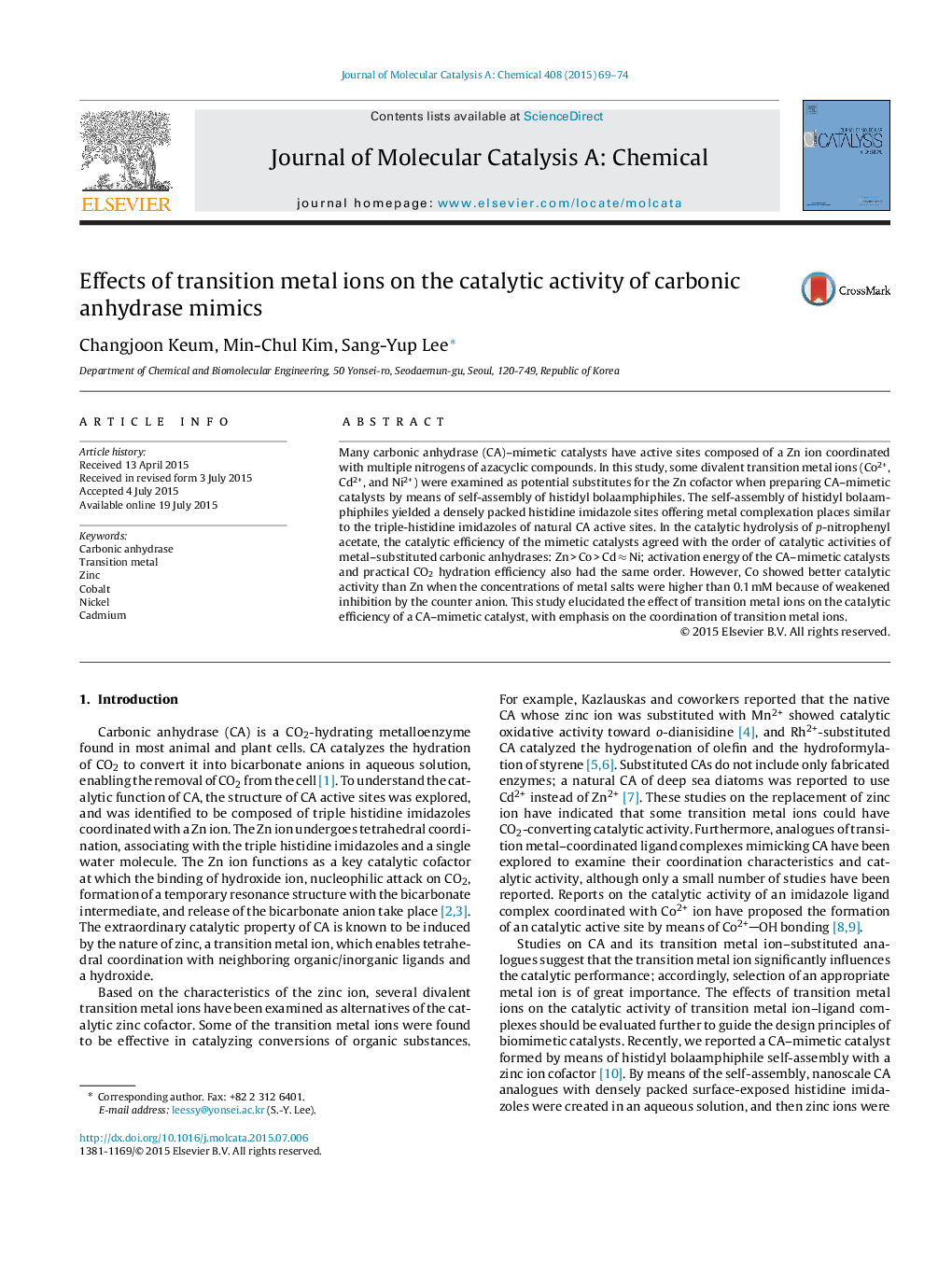| کد مقاله | کد نشریه | سال انتشار | مقاله انگلیسی | نسخه تمام متن |
|---|---|---|---|---|
| 64861 | 48373 | 2015 | 6 صفحه PDF | دانلود رایگان |
• Self-assembly of histidyl bolaamphiphiles was used as an apoenzyme-mimic of carbonic anhydrase.
• Catalytic efficiency was ordered as follows: Zn > Co > Cd ≈ Ni.
• Coordination geometry of metal ions and their inhibition by counter anions strongly influenced the catalytic efficiency.
Many carbonic anhydrase (CA)–mimetic catalysts have active sites composed of a Zn ion coordinated with multiple nitrogens of azacyclic compounds. In this study, some divalent transition metal ions (Co2+, Cd2+, and Ni2+) were examined as potential substitutes for the Zn cofactor when preparing CA–mimetic catalysts by means of self-assembly of histidyl bolaamphiphiles. The self-assembly of histidyl bolaamphiphiles yielded a densely packed histidine imidazole sites offering metal complexation places similar to the triple-histidine imidazoles of natural CA active sites. In the catalytic hydrolysis of p-nitrophenyl acetate, the catalytic efficiency of the mimetic catalysts agreed with the order of catalytic activities of metal–substituted carbonic anhydrases: Zn > Co > Cd ≈ Ni; activation energy of the CA–mimetic catalysts and practical CO2 hydration efficiency also had the same order. However, Co showed better catalytic activity than Zn when the concentrations of metal salts were higher than 0.1 mM because of weakened inhibition by the counter anion. This study elucidated the effect of transition metal ions on the catalytic efficiency of a CA–mimetic catalyst, with emphasis on the coordination of transition metal ions.
Using self-assemblies of histidyl bolaamphiphiles as mimics of the carbonic anhydrase apoenzyme, the catalytic performances of various divalent transition metal ion cofactors (Zn2+, Co2+, Cd2+, and Ni2+) were examined. Each catalyst’s performance was influenced by both the coordination geometry of the transition metal ion and its inhibition by counter anions.Figure optionsDownload high-quality image (185 K)Download as PowerPoint slide
Journal: Journal of Molecular Catalysis A: Chemical - Volume 408, November 2015, Pages 69–74
